
Journal of Hard Tissue Biology
Scope & Guideline
Pioneering Research in Hard Tissue Applications
Introduction
Aims and Scopes
- Bone Biology and Regeneration:
Research in this area includes studies on osteoblasts, osteoclasts, and osteocytes, focusing on cellular mechanisms, differentiation, and regeneration processes relevant to bone health and recovery. - Dental Tissue Studies:
This includes investigations into the biology of dental tissues, such as the pulp and periodontal ligament, and how these tissues respond to various treatments and conditions affecting oral health. - Biomaterials and Tissue Engineering:
The journal publishes articles on the development and evaluation of biomaterials for dental and orthopedic applications, emphasizing innovative strategies for tissue regeneration and repair. - Pathophysiology of Oral Diseases:
This encompasses research into the mechanisms underlying various oral diseases, including periodontitis and oral cancers, often linking these conditions to broader systemic health issues. - Technological Innovations in Hard Tissue Research:
The journal highlights advancements in imaging techniques, biostatistics, and computational modeling that enhance the understanding of hard tissue structures and functions.
Trending and Emerging
- Molecular Mechanisms in Tissue Regeneration:
Recent publications have increasingly focused on the molecular pathways involved in the regeneration of hard tissues, such as the role of specific genes and proteins in osteogenesis and dentinogenesis. - Regenerative Medicine Approaches:
There is a growing emphasis on regenerative techniques, including the use of stem cells and biomaterials to promote healing in dental and orthopedic contexts. - Impact of Systemic Conditions on Hard Tissue Health:
Research exploring how systemic diseases, such as diabetes and osteoporosis, affect the biology and integrity of hard tissues is gaining traction, underscoring the interconnectedness of systemic and oral health. - Advanced Imaging and Characterization Techniques:
The adoption of novel imaging methods, including micro-computed tomography and advanced microscopy, is increasing, allowing for more detailed analyses of hard tissue structures and their properties. - Nanotechnology in Hard Tissue Applications:
Emerging studies are examining the application of nanotechnology in enhancing the properties of biomaterials, which is expected to revolutionize approaches to hard tissue restoration and regeneration.
Declining or Waning
- Traditional Dental Materials:
There has been a noticeable decrease in studies focusing on conventional dental materials, as newer biomaterials and techniques for dental restoration and regeneration are gaining more attention. - General Oral Surgery Techniques:
Research papers detailing standard surgical techniques without a focus on innovative methods or outcomes have declined, indicating a shift towards more specialized and cutting-edge approaches. - Basic Histological Studies:
Traditional histological analyses without integration of molecular or genetic insights are less frequently published, reflecting a trend towards more complex, multifaceted research designs.
Similar Journals
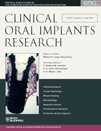
CLINICAL ORAL IMPLANTS RESEARCH
Exploring Breakthroughs in Oral Implant TechnologyClinical Oral Implants Research, published by Wiley, is a premier journal dedicated to the field of oral surgery and implantology. Established in 1990, this influential journal has rapidly ascended to the forefront of dental research, notable for its Q1 ranking in the Oral Surgery category and a remarkable 97th percentile ranking among 74 journals in Dentistry- Oral Surgery, according to Scopus metrics. The journal aims to disseminate cutting-edge research findings, innovative techniques, and comprehensive reviews that fundamentally enhance understanding and practice in dental implants. With a commitment to fostering collaboration and knowledge-sharing among professionals, researchers, and students, Clinical Oral Implants Research plays a vital role in advancing the scientific community's grasp of implant dentistry and improving patient outcomes on a global scale. While it operates under traditional subscription access, it continues to attract a diverse readership interested in the latest advancements and strategies in oral implant research.
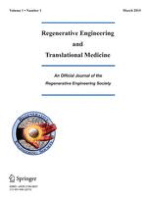
Regenerative Engineering and Translational Medicine
Pioneering Insights in Regenerative HealthRegenerative Engineering and Translational Medicine is an esteemed academic journal published by Springer Heidelberg, focusing on the interdisciplinary fields of biomaterials, biomedical engineering, and cell biology. With an ISSN of 2364-4133 and an E-ISSN of 2364-4141, the journal has carved a niche for itself since its inception in 2015, showcasing cutting-edge research that bridges the gap between scientific findings and practical applications in regenerative medicine. As a recognized platform in its field, it is currently positioned within Q3 quartiles in biomaterials, biomedical engineering, and medicine (miscellaneous), with a Scopus ranking that reflects its growing influence among peers. The journal aims to disseminate high-quality, peer-reviewed articles that highlight advancements in regenerative engineering, further advancing both theoretical and applied research. Scholars and practitioners seeking to stay at the forefront of the ever-evolving landscape of regenerative health solutions will find invaluable insights and innovations within these pages. Join a community of leading thinkers and explore the journal's comprehensive research contributions, which are crucial for fostering partnerships between academia and industry in the quest for transformative medical solutions.

EMBO REPORTS
Advancing Molecular Biology Through Rigorous ResearchEMBO REPORTS, published by WILEY, is a premier journal in the fields of Biochemistry, Genetics, and Molecular Biology, recognized for its rigorous peer-review process and impactful scientific contributions. Established in the year 2000 in the United Kingdom, this journal has maintained a stellar reputation, reflected in its consistent positioning within the Q1 category across these disciplines as of 2023. EMBO REPORTS excels in disseminating high-quality and timely research that addresses fundamental questions and challenges in molecular biology and genetics, making it an invaluable resource for researchers, professionals, and students. With impressive Scopus rankings, including Genetics at the 32nd rank and a 90th percentile placement, it fosters an environment for scholarly exchange and advances in knowledge. While Open Access options are not available, the journal continues to enhance its impact through traditional subscription models, thereby maintaining wide visibility in the scientific community. Its ongoing evolution promises continued relevance and influence until at least 2024.
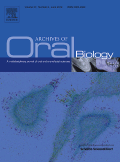
ARCHIVES OF ORAL BIOLOGY
Advancing the Frontiers of Oral Health ResearchThe Archives of Oral Biology, published by Pergamon-Elsevier Science Ltd, is a prestigious journal that has been at the forefront of oral biology research since its inception in 1959. With a focus on advancing knowledge in the fields of cell biology, dentistry, and otorhinolaryngology, this journal serves as a critical platform for disseminating innovative research findings, spanning from fundamental scientific studies to clinical applications. The journal enjoys a respectable impact factor, with notable rankings in various categories, including Q2 in Dentistry and Otorhinolaryngology, making it highly relevant for professionals and researchers alike. Though not open access, the Archives of Oral Biology continues to attract high-quality submissions and remains an influential source of information for the global scientific community, contributing significantly to the understanding of oral health and disease.
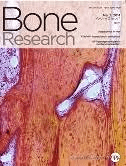
Bone Research
Advancing the Science of Bone HealthBone Research is a premier open-access journal published by SpringerNature, dedicated to advancing the understanding of bone biology and its related disciplines. Established in 2013 and based in the United Kingdom, this journal has quickly ascended to the forefront of scientific inquiry, evidenced by its esteemed Q1 rankings in 2023 across multiple categories including Endocrinology, Diabetes and Metabolism, Histology, and Physiology. With a commendable impact reflected in its Scopus ranks—positioned #2 in Histology, #9 in Endocrinology, and #8 in Physiology—Bone Research serves as a vital platform for researchers, healthcare professionals, and students alike to share and access cutting-edge findings. Since adopting an open-access model in 2014, the journal has empowered an expansive audience by facilitating immediate availability of high-quality research. This aligns with its commitment to foster innovation and collaboration within the fields it encompasses. As it converges its efforts from 2013 to 2024, Bone Research remains a critical resource for those looking to deepen their investigation into bone health and diseases, ensuring its place as a leader in promoting scientific excellence.
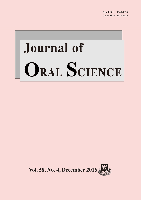
Journal of Oral Science
Advancing dental knowledge through innovative research.The Journal of Oral Science, published by NIHON UNIVERSITY, SCHOOL OF DENTISTRY, stands as a pivotal platform in the realm of dental research and oral health. Since its inception in 1998, this reputable journal has dedicated itself to the dissemination of innovative findings and critical reviews across various sub-disciplines of dentistry, highlighted by its impressive Scopus Rankings positioning it in the 64th percentile in General Dentistry. With categories ranking Q2 in Dentistry and Q3 in Medicine for 2023, it reflects a significant contribution to the body of knowledge in oral science. Although it is not an Open Access publication, researchers and professionals will find its curated content indispensable for advancing oral health practices and exploring new dental methodologies. For scholars seeking to expand their expertise in oral sciences and connect with fellow researchers, the Journal of Oral Science provides an essential resource, facilitating knowledge exchange and fostering advancements in dental science.
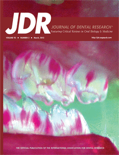
JOURNAL OF DENTAL RESEARCH
Your gateway to cutting-edge dental knowledge.JOURNAL OF DENTAL RESEARCH, published by SAGE PUBLICATIONS INC, stands as a premier resource in the field of dentistry, recognized for its significant contributions since its inception in 1919. With an impressive Q1 ranking in the field of Dentistry (miscellaneous) and holding the esteemed 2nd rank out of 132 journals in general dentistry, this journal consistently delivers high-quality articles that inform and shape modern dental practice and research. The journal caters to a diverse audience of researchers, professionals, and students, providing them with cutting-edge knowledge and insights into various dental topics. Although it operates under a subscription model, its extensive archives of research spanning from 1919 to 2024 remain an invaluable asset for those seeking to advance their understanding of dental science. With its headquarters in Thousand Oaks, CA, JOURNAL OF DENTAL RESEARCH continues to be an indispensable platform for the dissemination of innovative dental research.
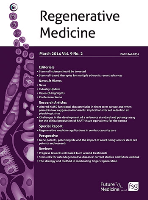
Regenerative Medicine
Charting New Territories in Regenerative MedicineRegenerative Medicine, published by Taylor & Francis Ltd, is a pivotal journal within the field of biomedical research, focusing on the innovative advances in regenerative and restored functions in human health. With an ISSN of 1746-0751 and an E-ISSN of 1746-076X, this esteemed journal boasts a commendable impact factor within its categories, notably holding the Q2 status in Embryology and Q3 in Biomedical Engineering as of 2023. Covering a broad spectrum of topics from stem cell research to tissue engineering, it serves as a crucial platform for interdisciplinary collaboration among researchers, professionals, and students dedicated to the regeneration of tissues and organs. Given its comprehensive scope from 2006 to 2024, the journal continues to attract high-quality manuscripts that advance the frontiers of knowledge in regenerative medicine. Researchers and practitioners alike are encouraged to engage with the latest findings and methodologies disseminated in this vital publication.
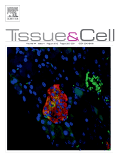
TISSUE & CELL
Exploring the Frontiers of Cell Biology and MedicineTISSUE & CELL is a prominent academic journal, published by CHURCHILL LIVINGSTONE, that has been at the forefront of research in the fields of cell biology, developmental biology, and miscellaneous areas of medicine since its inception in 1969. With a strong focus on high-quality research, TISSUE & CELL has established itself within the academic community, holding a Q3 ranking in both Cell Biology and Developmental Biology, and a Q2 ranking in Medicine as of 2023. The journal aims to disseminate significant findings that contribute to the understanding of tissue structure and function, helping to bridge the gap between basic biological research and clinical applications. While it operates on a subscription basis and does not currently offer Open Access options, the journal remains a vital resource for researchers, professionals, and students interested in cutting-edge developments in the biological sciences. The journal's address is located in the scenic city of Edinburgh, further establishing its academic heritage in the United Kingdom.
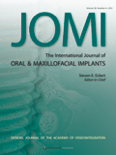
INTERNATIONAL JOURNAL OF ORAL & MAXILLOFACIAL IMPLANTS
Pioneering research in implant dentistry and oral surgery.INTERNATIONAL JOURNAL OF ORAL & MAXILLOFACIAL IMPLANTS, a reputable publication by QUINTESSENCE PUBLISHING CO INC, stands at the forefront of research in the fields of oral surgery and implant dentistry. With an ISSN of 0882-2786 and an E-ISSN of 1942-4434, this journal has been pivotal in disseminating cutting-edge findings and advancements since its inception in 1986. It is ranked Q1 in Oral Surgery and Q2 in Medicine (miscellaneous) as of 2023, reflecting its significant impact in the academic community—ranked #22 out of 74 in the Scopus Dentistry and Oral Surgery category, placing it in the 70th percentile. Although the journal does not currently offer open access, it remains a vital resource for researchers, professionals, and students looking to stay informed about the latest developments and trends in oral and maxillofacial implants. As it converges towards its 2024 milestone, the journal continues to uphold its commitment to excellence, making it an essential read for those dedicated to advancing the field.